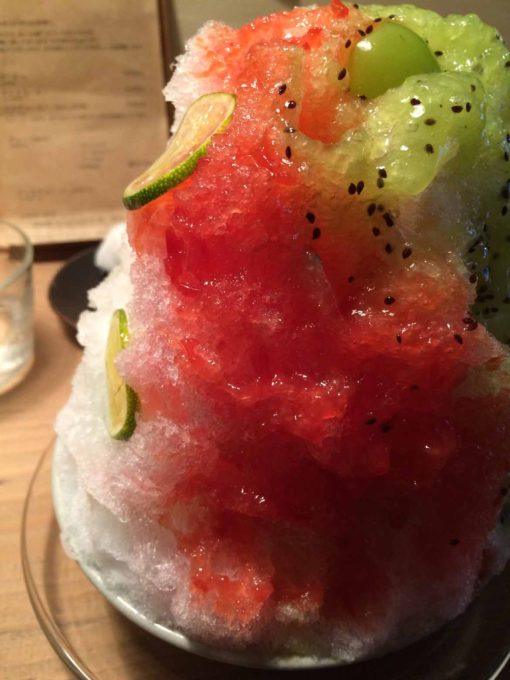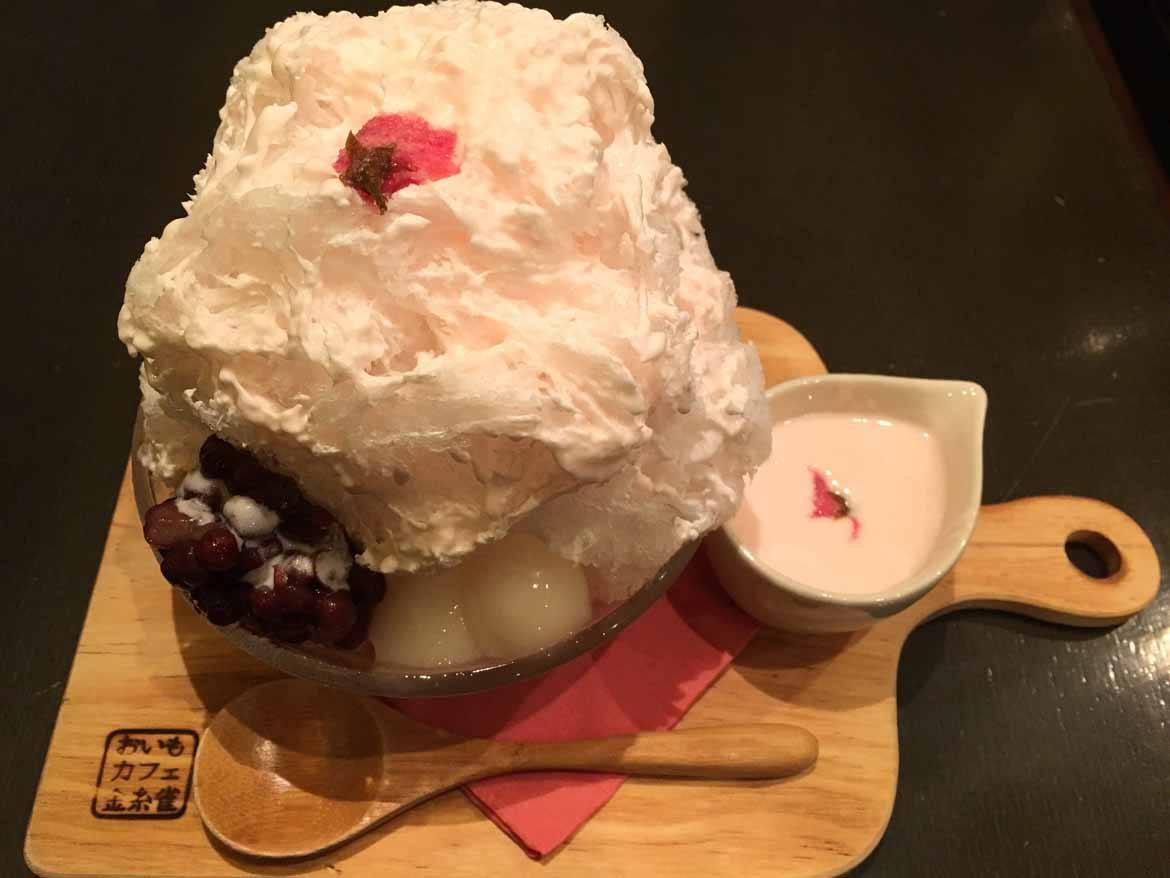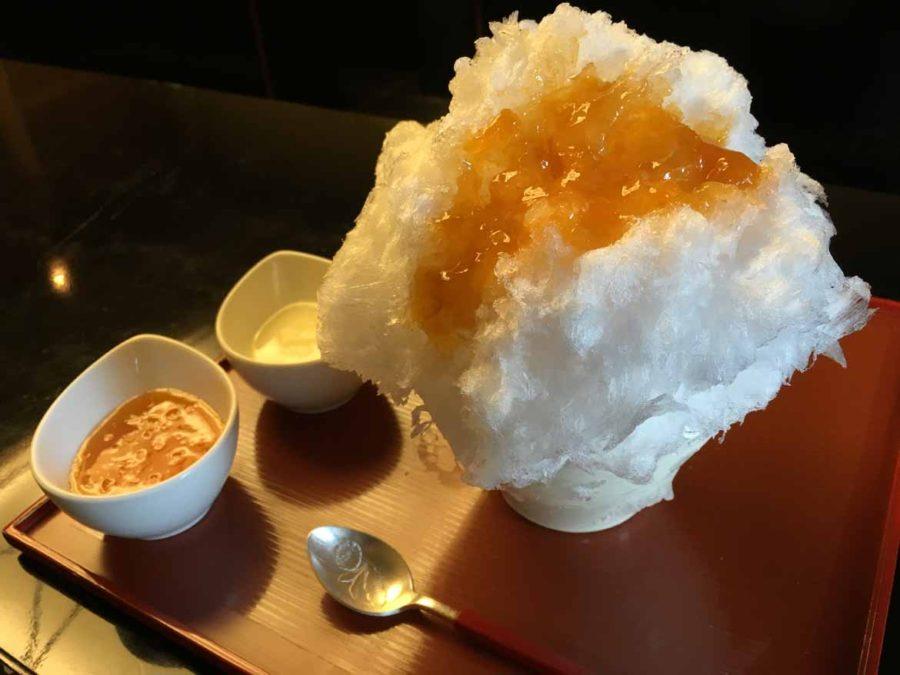Like this post? Help us by sharing it!
Tour leader Mark came to Japan from sunny Hawai’i to discover his Japanese roots. Like so many of us, he never left! Though Mark currently lives in Gifu Prefecture, he has also lived in rural Tottori and Aichi, and leads tours all over Japan. In the summer, there’s nothing he loves more than a big bowl of kakigori – a sweet treat that ties together both his Japanese and Hawai’ian heritage.
Slather yourself with sun cream, put on your wide-brimmed hat, and slide into your “slippahs” (as we say in Hawai’i). We’re going out for one of my favorite summertime sweets: kakigori (shave ice). Well, in Hawai’i you call it “shave ice”, or I suppose you could call it “shaved ice” if you insist on being grammatically correct and sticking out like a sore thumb. Your choice; hele on!
For anyone who has been to Hawai’i, you’ve probably noticed a fairly strong Asian influence in the food, culture, and people. One of the staples of the local cuisine is shave ice, which traces its roots back to Japanese kakigori, which was later brought over with Japanese immigrants.
Kakigori has been around since Japan’s Heian Period (794-1185). It was even mentioned in The Pillow Book, written during the late 900’s. This collection of observations and musings from a lady in the imperial court is a fairly personal work providing us with a glimpse into the past. According to the author’s description, ice was shaved into a vessel made of metal using a blade, and then flavored with amazura – a sweetener derived from a vine. Finally, the “elegant” concoction was served in a separate metal vessel.
Over the centuries, ice became more readily available, preservation techniques improved, and it became less expensive. However, it was the invention of ice-making machines that truly changed the accessibility of ice, and by the end of the 19th century, ice was within reach of most people. Couple those developments with the invention of a machine that took the physical labor out of shaving the ice, and you’ve got a national phenomenon on your hands.
While the original flavouring may have been amazura, popular, pre-WWII flavors included yuki (“snow”, sugar sprinkled on top), mizore (“sleet”, sugar syrup as a topping), and kintoki (sweet red bean paste on top). Times and tastes have changed, but you can still find traces of these flavours today!
This summer, while you’re pounding the pavement and filling up on sights around the country, be sure to stay well-hydrated, and treat yourself to some “shave ice!”
Where can you try kakigori?
Kitone (in Kyoto)
Hours: 12:00 – 17:00 (last order)
Closed: Wednesdays, Thursdays, and other non-set holidays
Map: https://goo.gl/maps/9ECF6akRmE62
Patience is a virtue, and good things come to those who wait… especially if you’re waiting to be seated at the intimate and unassuming Kitone. Homemade syrups that seem just too good to be true and a mountain of freshly shaved snow await you. So, sit down and wait your turn; you’ll be glad you did.

Oimo Cafe Kanaria (in Kamakura)
Hours: 10:00 – 17:30 (last order)
Closed: Wednesdays
Map: https://goo.gl/maps/2LstCKyRugk
One of the things I love about Oimo Cafe Kanaria is that they always have seasonal offerings and new flavours. When I visited in spring, I had their sakura (cherry blossom) kakigori: rice flour dumplings and sweet red bean paste, under a frozen cloud and sakura-scented cream. Oh yes desu! To top off this celebration of springtime in Japan: a preserved sakura blossom.

Obuseido (in Obuse)
Hours: 10:00 – 18:00
Closed: No holidays
Map: https://goo.gl/maps/5ExfYi9FgNG2
After you’ve marvelled at the work of Hokusai at the Hokusai Museum, and had you fill of exploring the town, I recommend a stop at Obuseido. Though Obuse if famous for its chestnuts, I couldn’t resist the annin (apricot) kakigori. Perfect way to wrap up a visit to this quaint little town. See the image at the beginning of this article for a taste of what you could try!
If you’re planning a trip to Japan, we can help! Our expert travel consultants have lived and worked all over the country and would be glad to offer advice. Click here to get in touch and start planning today.


